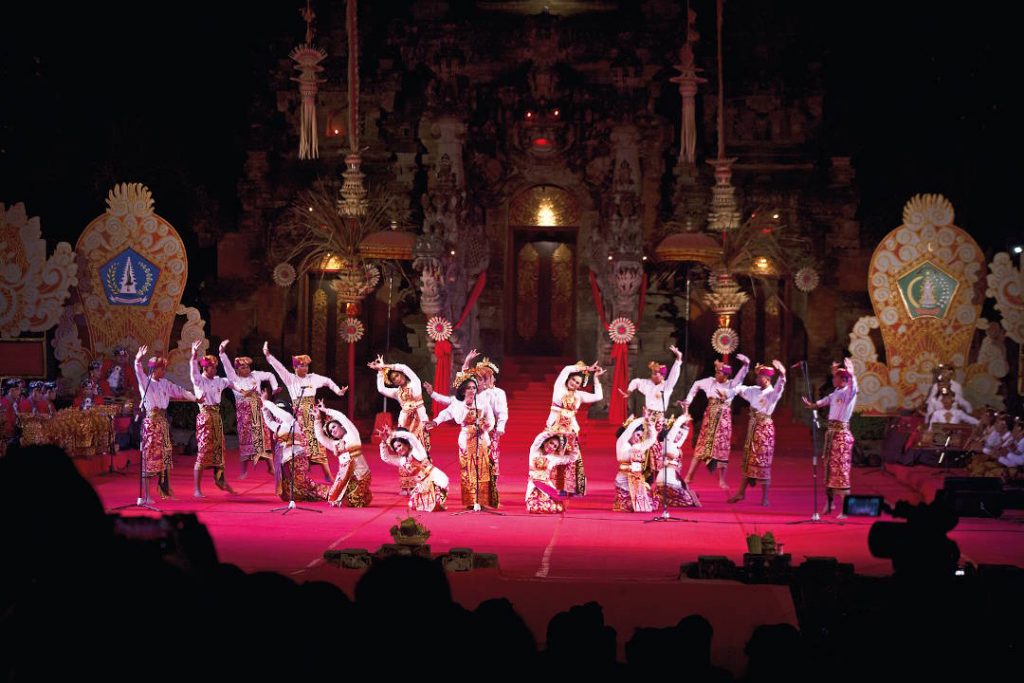Thousands of eyes peered down onto the stage. The audience’s applause thundered as a choir group made their entrance. As their voices rose up, a cheer broke out.
The troop performing were Kerta Mangeswari Jaya Pasti, the ambassadors of Jembrana regency, a municipality in west Bali, and clearly very popular. This particular performance took place at the Bali Arts Festival and showcased a contemporary creation that blended choir, dance and gamelan orchestra into one. This type of performance is called a Sandya Gita, which is often referred to as the ‘nasi campur’ (or mixed rice dish) of the performing arts in Bali.

This particular Sandya Gita, titled Purwa Nirartha, narrated the story of the temple in the group’s village. It tells the story of Dang Hyang Nirartha, a holy priest who arrived in bali to spread the wisdom of Hindu teachings and was responsible for the building of major temples, like Uluwatu and Tanah Lot. He first arrived in Tanjung Ketapang, a territory that was ruled by I Gusti Ngurah Raksasa who was a follower of Bhairawa teaching. He considered himself as the highest being, expecting the civilians to worship him at his shrine.
Dang Hyang Nirartha refused to worship him at Pelinggih Bebaturan – a shrine. However, I Gusti Ngurah Raksasa could not resign himself to failure, he forced the holy man to worship him. When Dang Hyang Nirartha placed his hands at his forehead to worship, the shrine magically shattered into pieces. The shrine was then called Pura Encak, Temple of the Ruined.
The choir narrated the story through lyrics sung in Kidung, a local dialect. The Balinese language has three tiers: the highest and most polite is used when speaking to high castes (royal Kesatria caste and priestly Brahmin caste), the middle tiers is used in daily conversation with elders, and the lowest is the harshest dialect that is typically used between friends of the same age. Kidung is the highest dialect, often sung in temples as part of holy rituals. Old kidung was written in Kawi language, which is the ancient Javanese language that is now rarely being used in a conversation, even in Java.
While the gamelan musicians were producing harmonious tones and rhythm to accompany the choir, the choir doesn’t only sing. Both men and women were dancing following a well arranged choreography. These were not complicated dance routines, but the movements beautifully complimented their singing, helping to share the story through movement, visuals and expression for those unable to understand the Kidung.
The magic of the Sandya Gita prevails.






